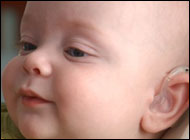Your Hearing May be at Risk
Call it acoustic trauma or noise-induced hearing loss. By any name, it’s the most important preventable cause of permanent hearing loss. Up to 28 million Americans have impaired hearing; for as many as a third, acoustic trauma is a significant contributor, reports the December 2007 issue of Harvard Men’s Health Watch.
Acoustic trauma is a product of modern life. On-the-job noise exposure is the most common cause, but recreational noise—such as loud music—is catching up. If present trends continue, the condition may someday be known as “iPod ear.”
A sound’s potential to damage the ear depends on the duration as well as the intensity of the sound. How much sound is dangerous? The Occupational Safety and Health Administration offers guidelines: Sounds below 75 decibels (dB) are safe, but eight hours at 85 dB can be harmful. (The sound of a lawnmower or heavy traffic is approximately 90 dB.)
Most often, noise-induced hearing loss begins with a subtle difficulty hearing high-frequency tones, then slowly begins to encompass lower tones. Usually, both ears are equally involved. Once your hearing is lost, it can’t be restored; your only recourse is to wear a hearing aid. That’s why it is important to recognize the warning signs. If your ears ring or buzz after being exposed to noise, it’s loud enough to cause damage. And if noise exposure makes hearing painful, muffled, blurry, or distant for hours or days, you are already in trouble. 
Harvard Men’s Health Watch provides some sound advice: First and foremost, turn down the volume. For occasional exposures, use disposable ear plugs. If you’re frequently at risk, invest in custom-fitted ear plugs. And for maximum protection, add acoustic earmuffs.
Also in this issue:
• Gout: Joint pain and more
• Supplements vs. exercise for health
• Chocolate and health
• Shy bladder syndrome
Harvard Men’s Health Watch is available from Harvard Health Publications
Source: Harvard Men’s Health Watch